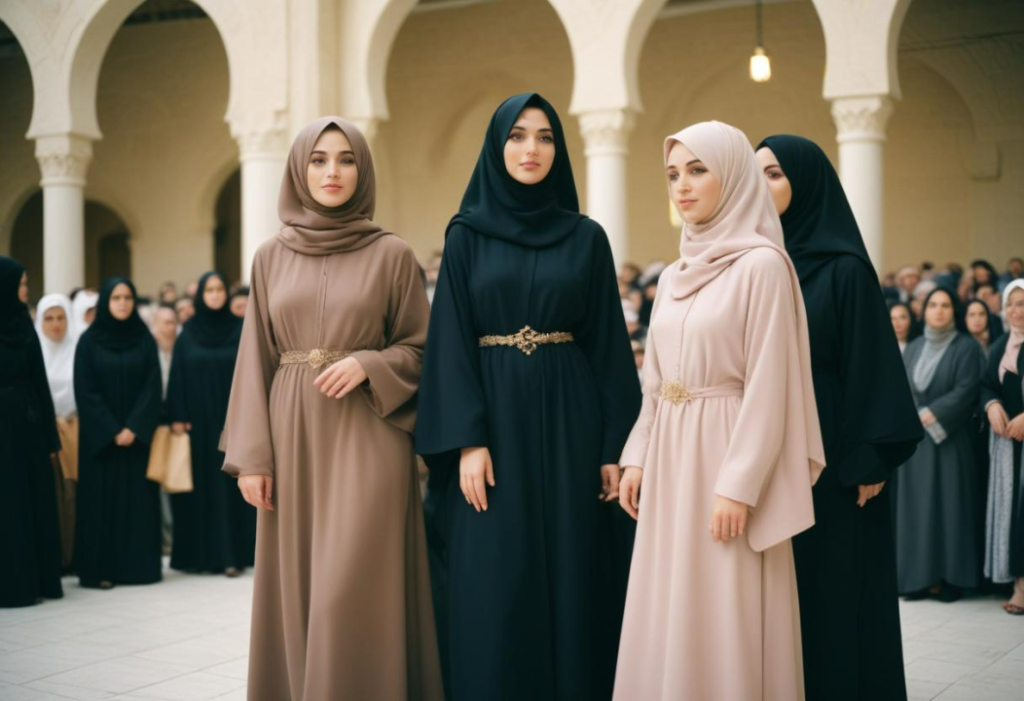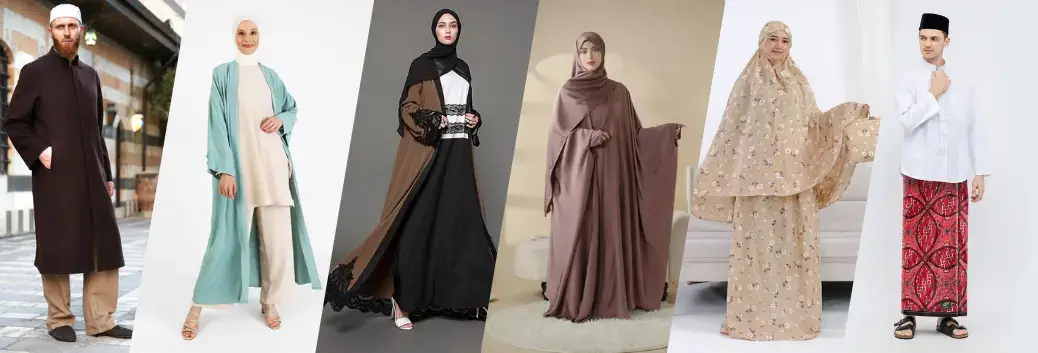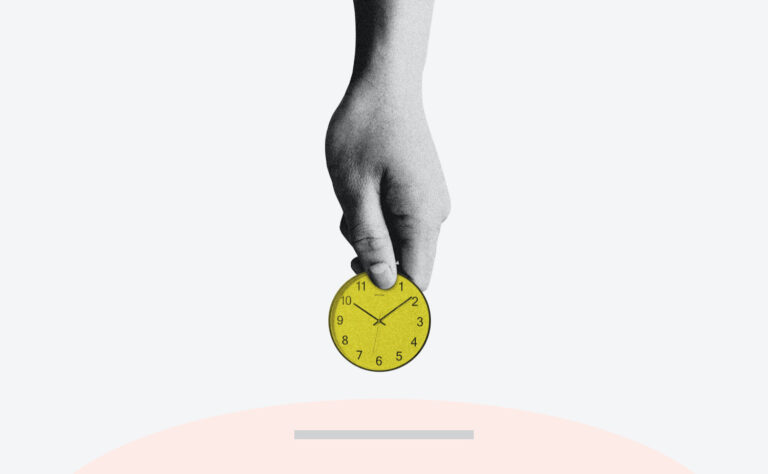In recent years, the global fashion industry has witnessed a significant shift towards more ethical and sustainable practices. Among the emerging trends reshaping the landscape is Halal fashion. But what exactly is Halal fashion, and why is it gaining traction? This article explores the concept of Halal fashion, its principles, its growing importance in the modern world, and its market potential.

What is Halal Fashion?
The term “Halal” originates from Arabic, meaning “permissible” or “lawful.” In the realm of fashion, Halal fashion refers to clothing and accessories that comply with Islamic principles and values. This involves adhering to the following key aspects:
- Modesty Halal fashion emphasizes modesty, ensuring that clothing covers the body adequately and avoids tight or revealing outfits. For women, this often includes wearing hijabs, long sleeves, and ankle-length garments. For men, modest fashion involves wearing clothing that is not overly tight and covers the body appropriately.
- Ethical Production Halal fashion mandates ethical production practices. This includes fair labor standards, safeguarding workers’ rights, and providing safe working conditions. The entire supply chain must be transparent, avoiding exploitation and ensuring justice.
- Material Standards Materials used in Halal fashion must exclude those derived from animals not slaughtered according to Islamic laws, such as pigskin or non-Halal animal products. Harmful chemicals and environmentally detrimental practices are also discouraged, aligning Halal fashion with broader principles of sustainability.
- Cultural Sensitivity Halal fashion respects Islamic cultural norms and values while catering to contemporary trends. It incorporates cultural and religious sensitivities, providing designs that resonate with diverse Muslim communities.
The Importance of Halal Fashion
Halal fashion extends beyond religious observance, reflecting a broader movement towards ethical consumption and sustainable production. Here’s why it is significant:
- Empowerment and Identity Halal fashion empowers Muslim consumers to express their faith and identity through their clothing. It bridges the gap between traditional values and modern fashion trends, fostering confidence and pride.
- Ethical and Sustainable Practices By promoting ethical labor practices and sustainable material use, Halal fashion aligns with the global push for responsible consumerism. It ensures that fashion choices positively impact both people and the planet.
- Meeting Market Demand With a global Muslim population exceeding 1.8 billion, the demand for Halal products, including fashion, is immense. Brands catering to this demographic can tap into a substantial and growing consumer base.
- Fostering Diversity and Inclusion By embracing Halal fashion, the industry becomes more inclusive, acknowledging the cultural and religious needs of diverse communities. This fosters acceptance and belonging, making fashion accessible to all.
Market Size and Economic Impact of Halal Fashion
The Halal fashion market is a burgeoning segment within the global fashion industry. According to the State of the Global Islamic Economy Report 2023, the spending on modest fashion by Muslim consumers reached $295 billion in 2022 and is projected to grow to $375 billion by 2025. This growth is fueled by factors such as rising disposable incomes in Muslim-majority countries, increased awareness of ethical fashion, and the expansion of e-commerce platforms.
Key markets driving this growth include Southeast Asia, the Middle East, and parts of Europe and North America with significant Muslim populations. Governments and industry players in these regions are investing in Halal fashion as part of broader economic strategies to support Islamic economies.
A Comprehensive Analysis of Halal Fashion
To understand Halal fashion more deeply, it is essential to consider various perspectives and nuances:
- Consumer Perspective For many Muslim consumers, Halal fashion is more than a choice; it is a necessity aligned with their religious and cultural values. Beyond compliance with Islamic guidelines, Halal fashion allows individuals to express their identity and preferences. Younger generations, in particular, seek brands that balance modernity with tradition, pushing the industry to innovate stylish yet modest designs.
- Industry Perspective The fashion industry sees Halal fashion as an opportunity for market expansion. Brands are exploring ways to integrate Halal principles into their production processes without compromising quality or aesthetics. Leading companies recognize that catering to this niche market can enhance their global presence and brand loyalty among Muslim consumers.
- Cultural Perspective Halal fashion serves as a bridge between different cultural identities. By incorporating traditional Islamic attire with contemporary trends, it fosters mutual understanding and respect among diverse communities. This cultural fusion challenges stereotypes and highlights the versatility and richness of Islamic-inspired fashion.
- Economic Perspective The economic potential of Halal fashion is vast, with the global Muslim consumer market projected to grow significantly. The rise of e-commerce has further amplified access to Halal fashion, enabling small and medium-sized enterprises to reach a global audience. Governments in Muslim-majority countries are also supporting the industry, recognizing its role in economic development.
- Sustainability Perspective Halal fashion’s emphasis on ethical production aligns with sustainability goals. By advocating for environmentally friendly materials and practices, Halal fashion contributes to reducing the ecological footprint of the fashion industry. This synergy with sustainability trends attracts consumers beyond the Muslim demographic who prioritize green and ethical products.
The Future of Halal Fashion
As the global fashion industry evolves, Halal fashion is poised to play a pivotal role. Increasingly, brands recognize the value of catering to a diverse audience and adopting ethical and sustainable practices. From high-end designers to fast-fashion retailers, the trend towards Halal fashion is gaining momentum.
Looking ahead, innovation will drive Halal fashion’s growth. Designers and brands are expected to develop more creative, stylish, and culturally sensitive collections. This evolution will not only meet the needs of Muslim consumers but also attract a broader audience seeking ethical and sustainable options.
Conclusion
Halal fashion represents a harmonious blend of faith, ethics, and style. It offers a meaningful alternative for consumers who wish to align their fashion choices with their values. As awareness and demand for Halal fashion grow, it is set to leave a lasting impact on the global fashion landscape. By promoting inclusivity, sustainability, and ethical practices, Halal fashion paves the way for a more responsible and culturally sensitive future in style.




